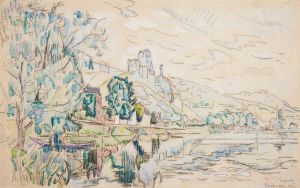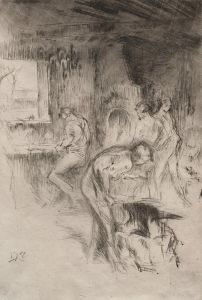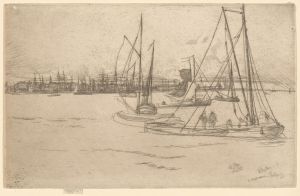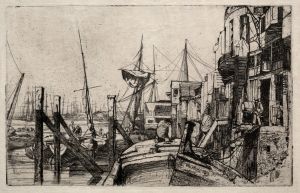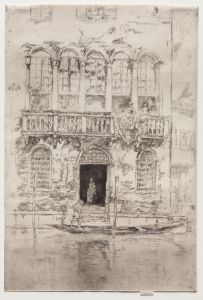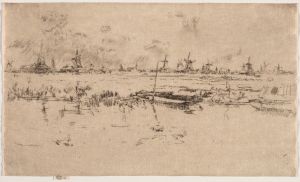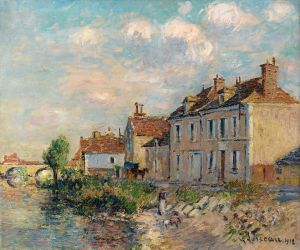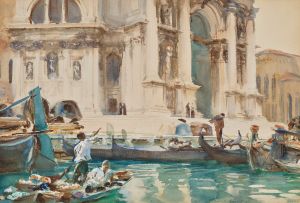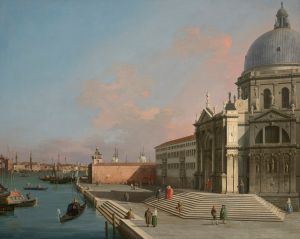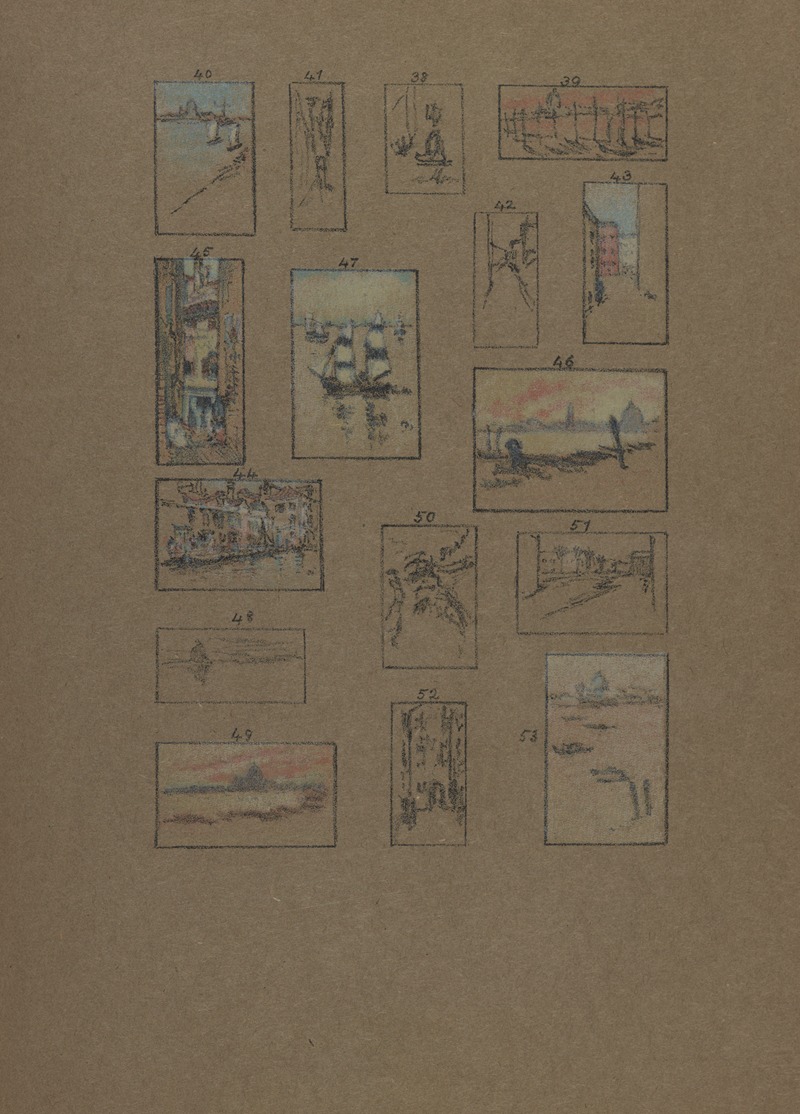
16 pastels of Venice.
A hand-painted replica of James Abbott McNeill Whistler’s masterpiece 16 pastels of Venice., meticulously crafted by professional artists to capture the true essence of the original. Each piece is created with museum-quality canvas and rare mineral pigments, carefully painted by experienced artists with delicate brushstrokes and rich, layered colors to perfectly recreate the texture of the original artwork. Unlike machine-printed reproductions, this hand-painted version brings the painting to life, infused with the artist’s emotions and skill in every stroke. Whether for personal collection or home decoration, it instantly elevates the artistic atmosphere of any space.
James Abbott McNeill Whistler, an influential American artist, is renowned for his contributions to the art world during the late 19th century. Among his diverse body of work, "16 Pastels of Venice" stands out as a significant collection that showcases his mastery of pastel as a medium and his deep appreciation for the city of Venice.
Whistler visited Venice in 1879, initially as part of a commission to create a series of etchings. However, his stay extended beyond the original plan, lasting over a year. During this period, Whistler became captivated by the city's unique atmosphere, architecture, and the interplay of light and water. This fascination is vividly captured in his "16 Pastels of Venice," which he completed during his time there.
The pastels are celebrated for their delicate and atmospheric qualities, capturing the essence of Venice with a subtlety and nuance that is characteristic of Whistler's style. Unlike his etchings, which focused on the intricate details of the city's architecture, the pastels emphasize mood and color, offering a more impressionistic view of Venice. Whistler's use of pastel allowed him to experiment with soft, diffused tones, effectively conveying the city's ethereal beauty.
Each piece in the collection reflects Whistler's keen observation and his ability to distill the essence of a scene into a few carefully chosen elements. The pastels often depict familiar Venetian landmarks, such as the canals, bridges, and piazzas, but they are rendered in a way that prioritizes atmosphere over precise detail. This approach aligns with Whistler's broader artistic philosophy, which emphasized the importance of mood and harmony in art.
Whistler's "16 Pastels of Venice" were well-received by critics and collectors alike, contributing to his reputation as a leading artist of his time. The pastels were exhibited in London in 1881, where they garnered attention for their innovative use of the medium and their evocative portrayal of Venice. This exhibition helped to solidify Whistler's standing in the art world and demonstrated his versatility as an artist.
The pastels are also significant for their role in the broader context of Whistler's career. They represent a period of transition for the artist, as he moved away from the more detailed and realistic style of his earlier works towards a more abstract and expressive approach. This shift is evident in the way he uses color and form to convey emotion and atmosphere, rather than focusing solely on representational accuracy.
Today, Whistler's "16 Pastels of Venice" are considered important works within his oeuvre, exemplifying his innovative use of pastel and his ability to capture the spirit of a place. They continue to be studied and admired for their artistic merit and their contribution to the development of modern art. Through these pastels, Whistler not only immortalized the enchanting city of Venice but also left a lasting impact on the art world, influencing subsequent generations of artists.





